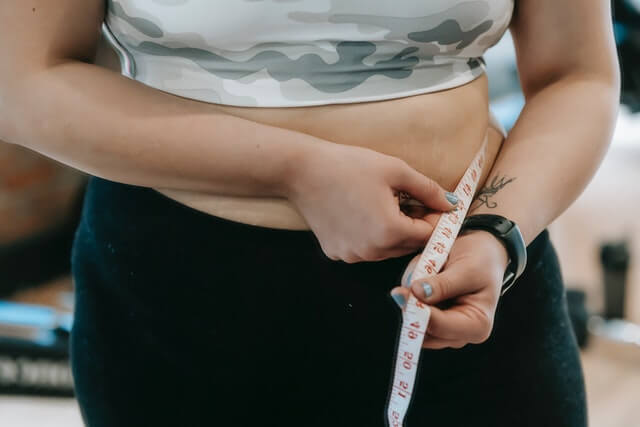We have all known skinny women who think they are fat. Some of us have known people who are overweight but just don’t see themselves that way.
I’ve had men friends whose stomachs looked like they swallowed a small beach ball, bang on their abdomen and show me how hard it is. (Of course it’s hard because all that dangerous abdominal fat, which lies underneath their abdominal muscles, is pushing hard against them in an effort to burst out!).
The point here is that many people’s body image of themselves is just not accurate, probably due more to emotions and psychological issues than “bad” eyesight.
For the past few decades healthcare professionals have been using and recommending that people get or calculate their body mass index (BMI) to help them determine if they are over-weight/over-fat.

How to Calculate BMI
You can calculate your BMI by dividing your weight in pounds by your height in inches times itself and multiplying that amount by 703.
So for example a woman who weighs 125 lbs and is 5’4” (64 inches tall) has a BMI of:
125 divided by the product of 64 times 64 then this amount is multiplied by 703, since 64 times 64 = 4096
Then 125/4096 = .0305175 X 703 = 21.45 BMI (in the healthy range)
A 5’9” fashion model who weighs 120 lbs would have a BMI of 17.7 (which is considered extremely underweight.)
BMI’s of less than 20 are considered to be underweight.
BMI’s between 20 and 25 are considered to be normal weight.
BMI’s between 25 and 30 are considered to be overweight.
BMI’s over 30 are considered to be obese.
The Issue with BMI
The problem with using BMI to make these body weight decisions is that BMI doesn’t take into consideration people who are large boned, people who are very muscular and people (especially those above 50 years old, who may have lost lean muscle as they aged). In essence it doesn’t differentiate between bone weight, fat weight and muscle weight.
For those in the older group, their weight may have stayed the same or gone up only slightly but they replaced the lean muscle weight they lost, with fat weight. So, although their BMI comes out looking normal, a much greater percentage of their weight is fat than is probably ideal.
A good example of the above is in the elderly who can actually look thin and frail and yet have body fat percentages in the 30% range.
Obviously BMI measurements have their short comings but an even more important question about BMI measurements is now being asked: “Are they helpful in predicting future health or illness/disease and longevity?

The answer seems to be that they are not as “predictive” of what your future health situation will be as originally thought and that a better measurement to predict the effect of your weight and body composition on your health and longevity is the “Waist to Height” ratio.
Keeping the ratio of your waist in inches divided by your height in inches to below .5 (or in other words your waist in inches less than 50% of your height in inches) helps you to avoid the illnesses and diseases that can shorten your life span (heart disease, stroke, diabetes and cancer) and add years to your life expectancy.
So a 5’10” male (70 inches tall) should have a waist measurement of less than 35 inches.
The 5’4” woman we mentioned before (64 inches tall) should have a waist measurement of less than 32 inches.
Researchers from Oxford followed the waist-to-height ratio and the BMI of thousands of people for 20 years and found that the waist-to-height ratio was much more predictive of poorer health and reduced life-span than the BMI measurement, as the participants waistlines increased in size.
Men whose ratio approached .8 (a waist measurement of 80% of their height measurement) on average, lived 17 years shorter than people who were below .5.
Women with the .8 ratio lived on average 8.2 years less.
Assuring an accurate waist measurement:
I can’t speak to how women measure their waists but some men are “notorious” cheats or delusional or both when it comes to measuring their waists. They may have a 40 inch waist but wear their “34 inch jeans” six inches below their navel with their big bellies hanging over the waistline and state that they have a 34 inch waist.
The accurate way to measure your waistline whether you are a man or a woman is to measure either about an inch above the belly button or midway between the top of your hips and the bottom of your rib cage. They should both come out around the same spot.
Curt Hendrix M.S. C.C.N. C.N.S.


